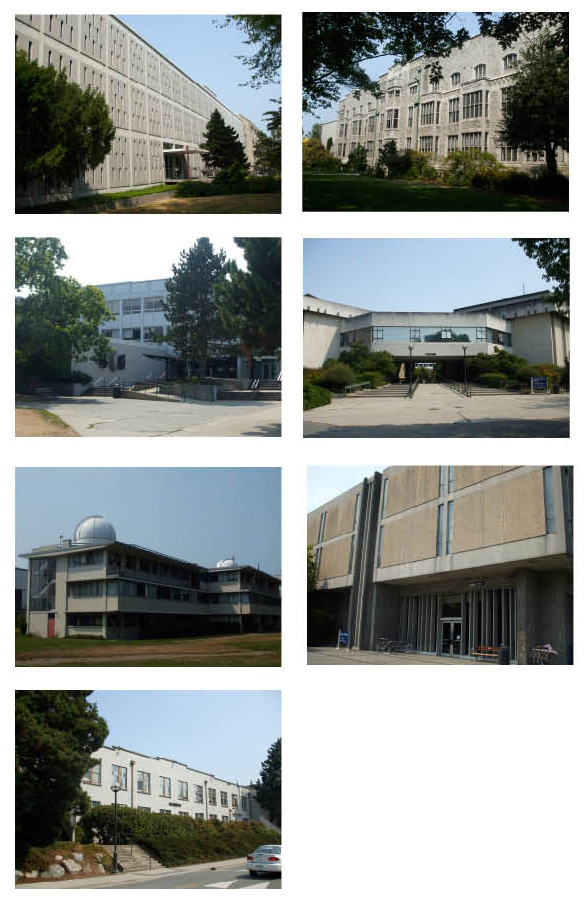
If you’re a Canadian university student, there’s an easy way to tell where your faculty stands in the university’s hierarchy. Just look around you. Does your building feature the latest in LEED technology, up-to-the-minute computer facilities, and lecture theaters equipped with comfortable chairs and ceiling-mounted digital projectors? You’re in the money…and by that I mean you’re a business or science student. On the other hand, if your faculty is located in what we used to call “portables” in grade school, and lacks all but basic lighting and plumbing, you’re probably in the social sciences.
This useful guide demonstrates these principles at UBC. One of the oldest, and most antiquated, universities in Canada, UBC has nothing but sharp distinctions between the “haves” and “have nots”. First, the rich folks. Computer science are a good example, with three (count’em, three) major buildings, the newest of which only contains classrooms (the Hugh Dempster Pavilion). Or the Forestry faculty, whose massive timber-lined fortress was built on donations from Weyerhouser and MacMillan Bloedel. If you’re studying science or business, your faculty is associated with, and sponsored by, mega corporations, and these important ties ensure you have the best facilities on campus. You also get a pile of grants, all the teaching assistantships you want, and often free lab or computer equipment. Not only that, your faculty is highly regarded by the university, politicians, and the public in general.
Your faculty could be one that used to be considered important. You know, like chemistry (not chemical engineering…chemistry). Or geography. Or sociology. Subjects that commanded a lot of prestige back in the day when universities were about learning first and patenting inventions second. Your building was either built 100 years ago or 40 years ago, the two major university-building eras in Canadian history. So either you’re in a beautiful stone building that has just been brought up to safety codes, or you’re in a 1960s modernist bunker.

If your faculty is considered marginally important to society (ie, your research does not involve mathematical predictions, computer models, or patentable organisms or technology) then the university and the public have ensured that your faculty is in marginal condition. There’s no need to lock your doors because the computer equipment is at least a decade or two old. It would be difficult to tell if vandals had set upon your building the night before. And suffice it to say, your classrooms are barely sufficient and your graduate students are crowded into tiny offices with 1970s chairs.

Neo-liberal principles are certainly alive and well at UBC. At this rate it won’t be long until we’ve eroded even English and History as valid subjects of study. Not to mention the difficulty of getting research funding in the social sciences: the Social Sciences and Humanities Research Council was recently forced to cut its funding to cover only business-related degrees. What about NSERC, the natural sciences equivalent? No worries, the government and multi-million dollar industries still support you.
Think your university is more balanced in its capital spending? If it’s publicly funded, like most Canadian universities, it’s pretty likely they’ve embraced public-private partnerships, which means only the rich shall survive.
